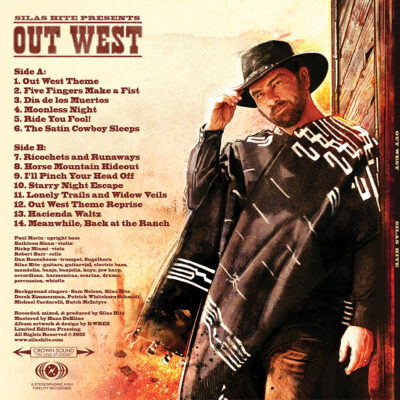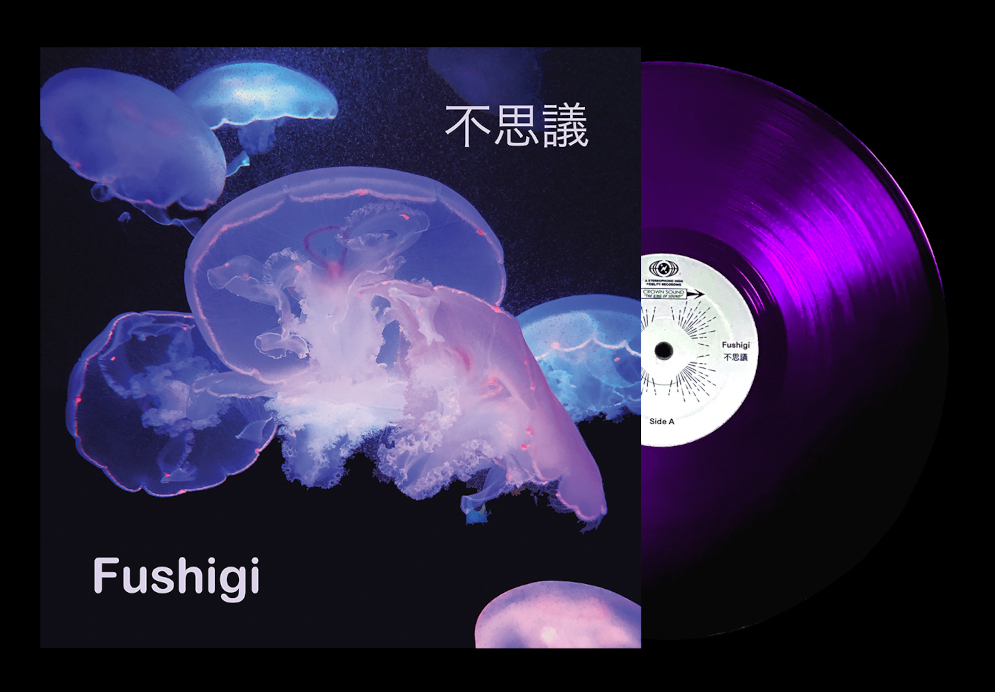Releasing Vinyl Records: 5 Lessons I Learned the Hard Way
Emmy-winning composer Silas Hite shares the tough experiences he’s endured when releasing vinyl records. You’ll save time and money on your next vinyl record release thanks to these valuable tips.
After releasing albums in many different formats over the years, I can honestly say that vinyl is my favorite, despite it being the most frustrating one. I’ve had so many awful experiences with the vinyl-making process you’d think I’d give up by now.
But I can’t. I love it. There is something magical and fulfilling about holding your own vinyl LP in your hands. The artwork is large enough to be properly admired and the music just sounds so good on a turntable.
I’ve often discussed my vinyl triumphs and woes with my friend, SonicScoop Co-Founder David Weiss, and he suggested sharing some of my experiences to help others avoid the same issues. So here are five lessons about releasing vinyl that I learned the hard way, plus a few extra tips at the end for good measure.
1. Pressing vs. Lathe
Lathe-cut records don’t sound as good as pressed records. This was the most difficult lesson I learned the hard way so I’d like to address it first.
Years ago, I wanted to press a small number of vinyl albums for my Americana album, Amigos. I wasn’t sure my audience had embraced vinyl enough to warrant pressing a large batch of records, so after doing some Internet research (which of course gave me bad info) I found a company that would make whatever number of albums I wanted! They used a method called lathe-cutting and their website assured me that my album would sound just as good as an album created using the traditional pressing method. It sounded too good to be true!
Time for a quick lesson. The most common way records are manufactured is called “pressing”. This method entails a metal master disk, known as a stamper, being pushed into hot vinyl. Lathe-cut vinyl records are produced by cutting tiny grooves into a polycarbonate disc using a special record lathe. Pressing is designed for mass production and most record pressing plants have a minimum order of 100 or 200 copies. The advantage of lathe-cut records is, because they are being made one at a time, you can order a specific number of albums, like ten, or even one. The downside is a loss of audio quality. I can’t say that is the case 100% of the time, but it certainly was my experience. To be fair, lathe-cut records still might be a good option for you, if audio quality isn’t your main concern.
As someone who prides myself on the sound quality of my albums, I spent months going back and forth with the company in question receiving multiple rounds of test pressings that just never sounded good. When I finally was able to get the owner/mastering engineer of the company on the phone (this took weeks and is another common problem I will address) he finally conceded that lathe-cut albums don’t typically sound as good as pressed vinyl! I was crushed. I recycled the boxes of album covers I had already printed (more on that later) and gave up on my vinyl dreams for that project. Amigos was eventually released on CD and digitally, but I couldn’t stomach spending any more time, energy, or money on a vinyl version. Sometimes you just have to let art go and move on to the next project.
2. Time Limits
In the age of digital albums, time constraints for albums are easy to ignore. If you’re making vinyl however, twenty minutes of music per side seems to be what most professionals recommend as a safe guideline. It’s true you can squeeze a few more minutes than that onto each side, but the more time you add past that twenty minute mark, the more you compromise audio quality.
I was aware of this time limitation when I made my latest album, Out West, but I ran into a different problem. Since I knew that I could fit forty minutes worth of music on the album, forty minutes became my goal. The issue I ended up facing was that by maxing out my time limit for each side, it made sequencing the songs very difficult. Coming up with the perfect song order is always a challenge, but when you are constrained by splitting the album into two, it becomes even harder. You essentially have two beginnings and two endings to consider, plus trying to arrange the tracks to add up to the correct amount of time. It becomes less about the sequence you want and more about making the puzzle pieces all fit. My advice? Less is more. Aim for less than forty minutes of music. Having even one or two less songs can help avoid sequencing limitations.
3. Pick a Communicative Company
I am always in search of helpful and communicative people to work with. I believe when you are paying a company for a service, they have an obligation to return emails and/or pick up the phone in a reasonable amount of time. Apparently, this is not a widely shared opinion in the vinyl pressing community.
My first few adventures with vinyl came with some questions. For instance, when I received my first test pressing of Sounds for a Dinner Party in the mail, there were audio issues that weren’t there before. When I attempted to get a hold of someone at the company to ask about resolving the issues, it took days, sometimes a week to get an email response. This was extremely frustrating. They had no phone number listed and I repeatedly asked for just a five-minute phone call so we could resolve the issue. They never called me and eventually the issue was resolved through a painfully slow email chain over the course of several weeks.
Unfortunately, I have heard this same story for other artists and bands. Often there isn’t a way to speak with someone over the phone, it’s email only, and they can be very slow to respond. To be fair, I understand why. A lot of artists make vinyl these days and a lot of them have absolutely no idea about the process and what to expect. I’m sure vinyl companies are trying to avoid spending lots of time on the phone with customers, and I understand that. But in my opinion, that’s just bad business. If you want my money, you have to treat me like a valued customer.
I advise you to consider this when selecting your company (or running your own business); a neglected client is rarely a repeat client. Research your vinyl company and/or try asking them a few questions to see how well they communicate before handing over your money and being at their mercy.

4. Save the Headache, Let Them Help
Most pressing companies offer a myriad of add-on services. They can handle the packaging, putting the vinyl in poly bags, hosting the digital download of your album, etc…
As a proud DIY musician I have attempted accomplishing some of these tasks on my own. For my underwater concept album Fushigi, I created and hosted a digital download solution for my album, for Amigos I printed the album covers with a third party to save a little cash, and for Sounds for a Dinner Party, I bought my own poly bags and stuffed the albums myself because I thought it would be fun. In every single case I can say I regretted my choice.
Generally it is better to let the pressing company handle these things. It can be tempting to save a little bit of money by doing these things yourself, especially as you keep adding to your order and the price keeps rising. But what I’ve come to discover is that typically pressing companies aren’t over-charging for these services and they are streamlined and experienced with their execution of them. Save yourself time, money, and headache and just let it be a one-stop shopping experience.
5. Planning & Patience
This might be the hardest part. Due to the rising demand for vinyl and the supply chain issues stemming from the pandemic, vinyl production times have slowed significantly. I waited a full year for the vinyl version of Out West to arrive! That means the album was done and I just had to be patient for a full year. Now it’s true that I could have started promotion early and accepted pre-orders for the vinyl, but after the horror stories I’ve endured during the vinyl creation process, I don’t advertise at all until the finished albums are in my hand and I am completely satisfied with them. I’ve had too many mishaps and setbacks along the way to be confident in “promised” delivery times.
Another reason to consider the “wait for it” approach, is if you are planning on selling your vinyl on tour. Most bands sell physical albums by selling them at shows. I know a few bands who have had tours planned to support their new album, only to find themselves hitting the road without their vinyl in-hand due to manufacturing delays. Let’s just say it’s much less rewarding to receive your merch after the tour has already ended.
Additional Helpful Tips
1. Prep Your Promo
Put your wait time to good use! The upside to the long wait for vinyl is that it gives you plenty of time to work on creating promotional materials. Once the album is finally ready to sell, it will be helpful to have photos, artwork, websites, music videos, etc. all ready to go.
2. Mastering Engineer
Pick a mastering engineer who is used to delivering music to vinyl houses. Also, pick a pressing plant that has a good mastering engineer on staff. They will be optimizing your music for the vinyl format. It’s an art form, and the ones who are good at it are worth seeking out.
3. Sound Quality vs. Color
Most people know that there are different weights of vinyl records. The heavier the weight, the better the sound quality. But did you know that colors and textures have an effect on sound quality? Swirls, spatters, solid colors, translucent colors can all degrade the quality of the audio. This is tough because most fans seem to prefer colored vinyl. My suggestion? Pick a solid translucent color. They look great and they offer the least amount of audio degradation. Here’s a helpful guide from my favorite pressing plant, Gotta Groove Records.
I hope these lessons and tips help you on your vinyl journey. It can be a rough road, but the destination is worth it and hopefully you will have an easier time after reading this article! Feel free to connect with me on social media if you have further questions about making vinyl.
— Silas Hite is an Emmy Award-winning composer whose TV, film, commercial, and video game credits include Apple, McDonalds, NBC, Google, Microsoft, EA, and many more. His latest score is for “The Big Brunch”, now streaming on HBO Max.
Please note: When you buy products through links on this page, we may earn an affiliate commission.









